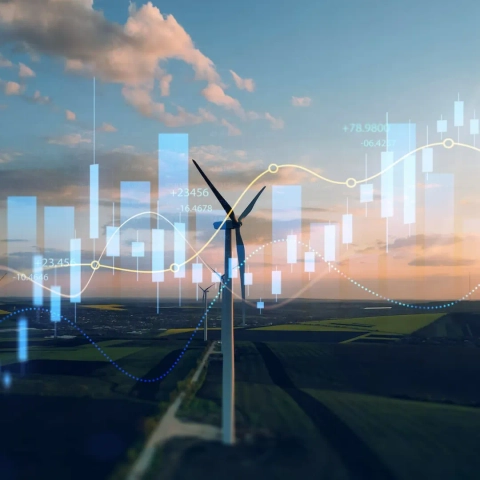Learning curves are an important part of the toolbox of energy system modelling, representing the benefits of learning by doing and the economies of scale. The learning rate describes how as production doubles capacity cost reduces, so a learning rate of 15% would imply that as production doubles, costs would fall by 15%. The learning curve is a notorious consultant’s tool, having been championed by the Boston Consulting Group in the 1960s.
We believe learning curves or rates have two important functions in the GB energy market: informing bids in subsidy auctions and fundamental inputs into long-term capacity expansion models.
Subsidy Auctions
As described in more detail in Phenomenal World, learning rates are an important function in Contracts for Difference (CfD) auctions, especially for offshore wind.
CfDs are allocated through competitive auctions and are held at least two to three years before delivery. It is expected the cost of the equipment at the time a Final Investment Decision is made is not the same as the cost at the time of the auction. This was factored into the decision-making process for bidding into previous auctions, with participants estimating the reduction in costs turbines and cables would undergo between the auction and the delivery date, allowing costs to come in at record lows.
Using a simple learning rate model may overestimate the impacts of cost reductions, especially in the short term. There are many complex moving parts that make up the cost of an offshore wind farm over its lifetime, from seabed leasing, cost of financing and network access charges.
- Our estimates for a Levelised Cost of Energy (LCOE) for offshore wind have increased significantly due to a host of macroeconomic developments.
- For the next CfD round, we believe the current government estimated Administered Strike Price cap – the highest price each technology type is allowed to bid – is sufficient for new build offshore wind to find the auction attractive; in 2022-23 prices the offshore wind ASP cap is £92.49/MWh, above the estimated LCOE of an offshore wind farm in 2027.
- There could be a significant uptick in competition in this latest auction round as a result.
Long-term Capacity Expansion Planning
- Long-term Capacity Expansion Planning is the modelling of future electricity systems over long-term horizons, typically 25+ years, to determine the optimal mix of capacity to build and when to build it. This normally involves considering many factors, such as retirements of capacity, cost of refurbishment, ongoing operational costs, investment costs, future demand etc. A Long-term Capacity Expansion model is a fundamental part of the Benchmark Power Curve service provided by Cornwall Insight.
- In our modelling, we have a hybrid method for determining the future costs of different technologies, using a series of available benchmarks to correct our results from the learning rate model we use and are therefore confident the outcomes of our capacity expansion planning are providing a useful view of the future.
What now for learning rates?
- While learning rates are an important input into long-term capacity modelling, especially for modular and scalable technologies like solar PV, there is a clear risk to relying on them too much for complex and bespoke projects.
- It is not yet clear where offshore wind fits into this spectrum, as it clearly has benefitted from economies of scale and mass production techniques but is bespoke in other aspects such as complications around siting and connections.
Cornwall Insight is holding an open workshop for market participants looking to engage in the auction. This will provide a refresher of the auction mechanics, detail notable changes for AR6, help understand key considerations for participation, and explore high level competitive dynamics. Please join us and sign up for our 90 minute webinar on 31 January at 10am by following this link.
For CfD auction participants Cornwall Insight will also be launching a CfD support and forecasting service for AR6, as well as bespoke simulation on request. This includes workshops for market participants, understanding key impacts from CfD auction updates, views on participation levels and competitive dynamics, key bidding considerations, and auction forecasts. Please contact T.Dixon@cornwall-insight.com for more information regarding our CfD services.




























